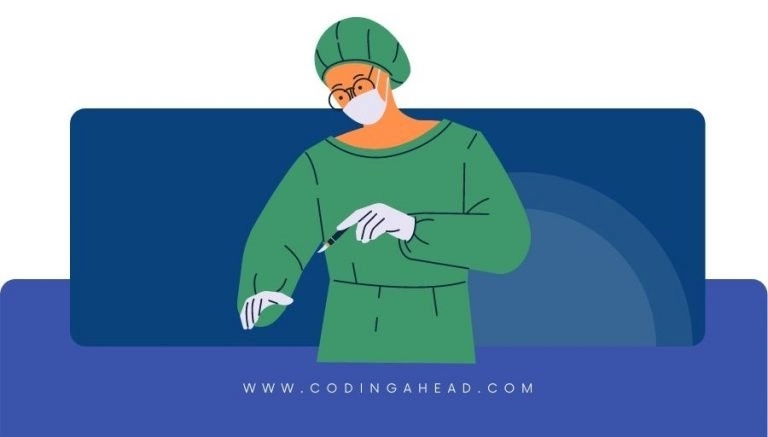How To Use CPT Code 52647
CPT 52647 describes the laser coagulation of the prostate, including control of postoperative bleeding, complete. This article will cover the description, procedure, qualifying circumstances, appropriate usage, documentation requirements, billing guidelines, historical information and billing examples.
1. What is CPT Code 52647?
CPT 52647 can be used to describe the laser coagulation of the prostate, including control of postoperative bleeding, complete. This code is used when a physician performs a non-contact laser coagulation procedure on the prostate, reducing its size. The code also includes the performance of vasectomy, meatotomy, cystourethroscopy, urethral calibration and/or dilation, and internal urethrotomy if they are performed during the procedure.
2. Official Description
The official description of CPT code 52647 is: ‘Laser coagulation of prostate, including control of postoperative bleeding, complete (vasectomy, meatotomy, cystourethroscopy, urethral calibration and/or dilation, and internal urethrotomy are included if performed).’ There are no additional notes provided for this code.
3. Procedure
- The physician performs the laser coagulation of the prostate under general anesthesia.
- A cystoscope is inserted into the urethra to visualize the surgical field, and irrigation may be performed for better visualization.
- A resectoscope is inserted through the urethra and passed until reaching the prostate.
- A laser-emitting fiber optic probe device is inserted, and the target tissue is fired with the laser.
- The heat energy conducted through the probe coagulates the target tissue, reducing the size of the prostate.
- A side-to-side sweep technique is used in a clockwise and counterclockwise movement to create an open cavity for maximum efficacy.
- If necessary, the physician may also perform vasectomy, meatotomy, cystourethroscopy, urethral calibration and/or dilation, and internal urethrotomy during the procedure.
- After the procedure, a catheter is inserted, and the patient is transferred to the recovery room.
4. Qualifying circumstances
CPT 52647 is performed in cases of benign prostate hyperplasia (BPH) in middle-aged and elderly men. It is indicated when the patient experiences lower urinary tract symptoms such as urgency, frequency, weak flow, infection, and incomplete bladder emptying. The procedure is performed by a physician using a laser coagulation technique, and it includes the control of postoperative bleeding. If the physician also performs vasectomy, meatotomy, cystourethroscopy, urethral calibration and/or dilation, and internal urethrotomy during the procedure, they are included in the code.
5. When to use CPT code 52647
CPT code 52647 should be used when a physician performs a complete laser coagulation of the prostate, including control of postoperative bleeding. It is appropriate for cases of benign prostate hyperplasia (BPH) in middle-aged and elderly men who experience lower urinary tract symptoms. If the physician also performs vasectomy, meatotomy, cystourethroscopy, urethral calibration and/or dilation, and internal urethrotomy during the procedure, they are included in the code.
6. Documentation requirements
To support a claim for CPT 52647, the physician must document the following information:
- Patient’s diagnosis of benign prostate hyperplasia (BPH)
- Details of the laser coagulation procedure performed
- Control of postoperative bleeding
- Any additional procedures performed, such as vasectomy, meatotomy, cystourethroscopy, urethral calibration and/or dilation, and internal urethrotomy
- Date of the procedure
- Signature of the performing physician
7. Billing guidelines
When billing for CPT 52647, ensure that the procedure is performed by a physician and includes the complete laser coagulation of the prostate, including control of postoperative bleeding. If additional procedures, such as vasectomy, meatotomy, cystourethroscopy, urethral calibration and/or dilation, and internal urethrotomy, are performed during the procedure, they are included in the code. There are no specific guidelines regarding reporting CPT 52647 with other codes.
8. Historical information
CPT 52647 was added to the Current Procedural Terminology system on January 1, 1995. The code was later revised on January 1, 2006 to include the control of postoperative bleeding.
9. Examples
- A physician performs a laser coagulation of the prostate, including control of postoperative bleeding, for a patient with benign prostate hyperplasia (BPH).
- During the procedure, the physician also performs a vasectomy and meatotomy for a patient with benign prostate hyperplasia (BPH).
- A physician performs a laser coagulation of the prostate, including control of postoperative bleeding, for a patient with benign prostate hyperplasia (BPH) and also performs cystourethroscopy and urethral calibration.


